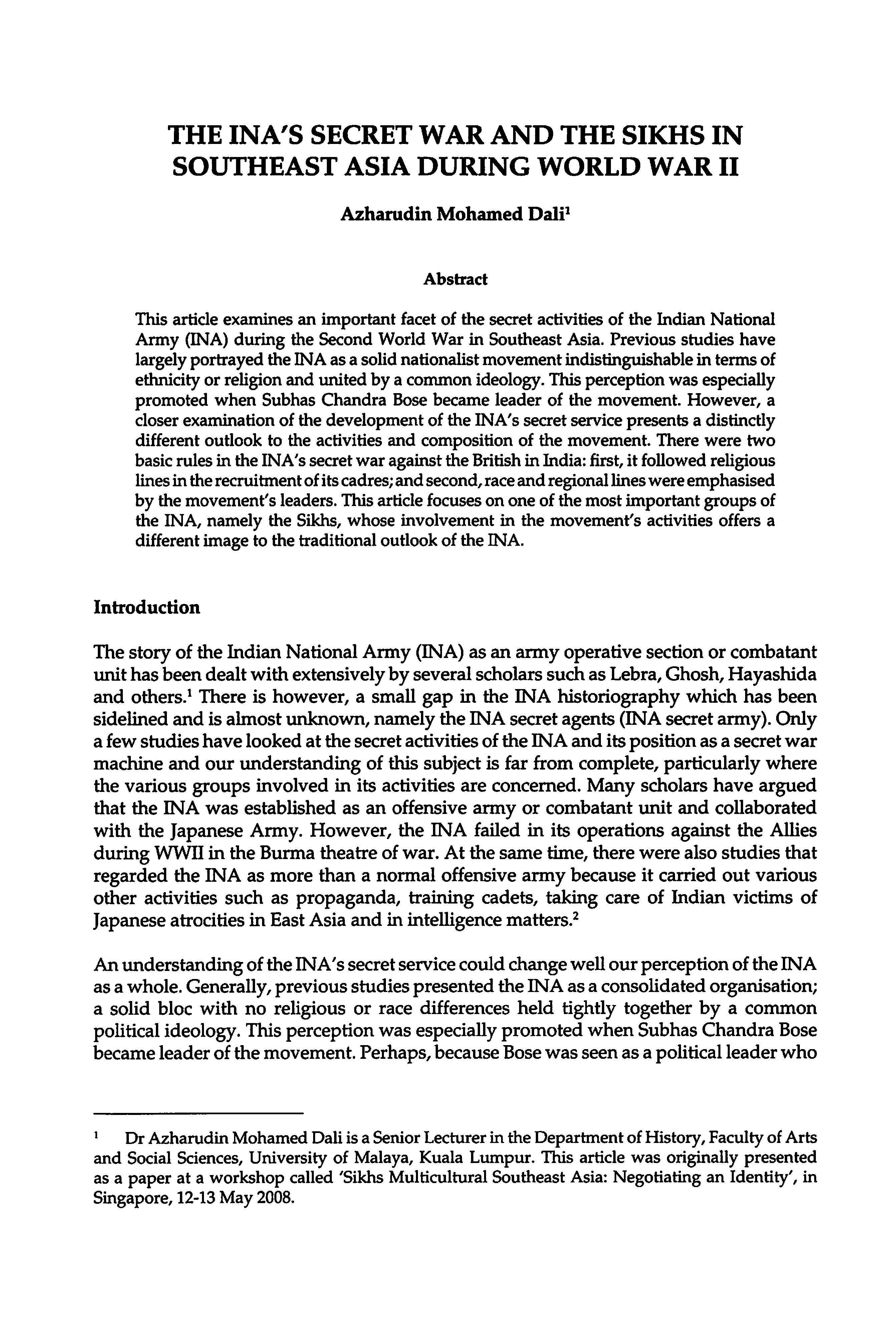THE INA'S SECRET WAR AND THE SIKHS IN SOUTHEAST ASIA DURING WORLD WAR II
Main Article Content
Abstract
This article examines an important facet of the secret activities of the Indian National Army (INA) during the Second World War in Southeast Asia. Previous studies have largely portrayed the INA as a solid nationalist movement indistinguishable in terms of ethnicity or religion and united by a common ideology. This perception was especially promoted when Subhas Chandra Bose became leader of the movement. However, a closer examination of the development of the INA's secret service presents a distinctly different outlook to the activities and composition of the movement. There were two basic rules in the INA'ssecret war against the British in India: first, it followed religious lines in the recruitment of itscadres; and second, race and regional lineswere emphasised by the movement' s leaders. This article focuses on one of the most important groups of the INA, namely the Sikhs, whose involvement in the movement's activities offers a different image to the traditional outlook of the INA.

